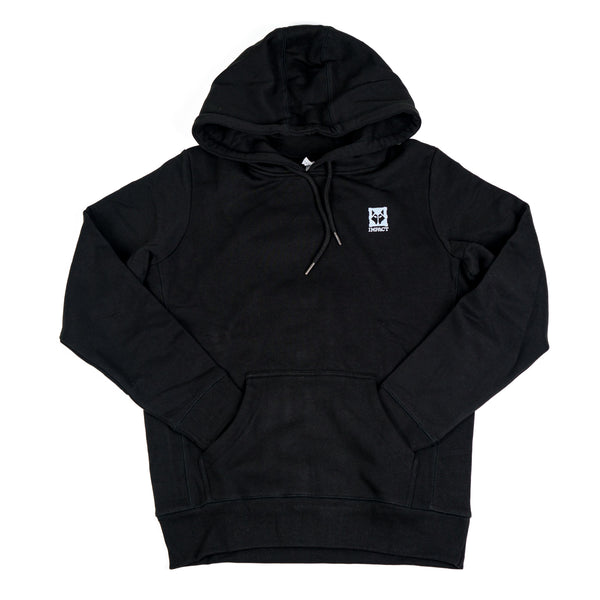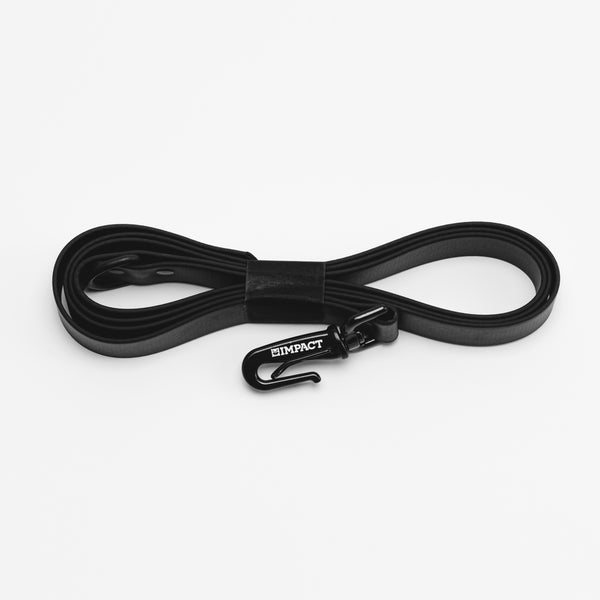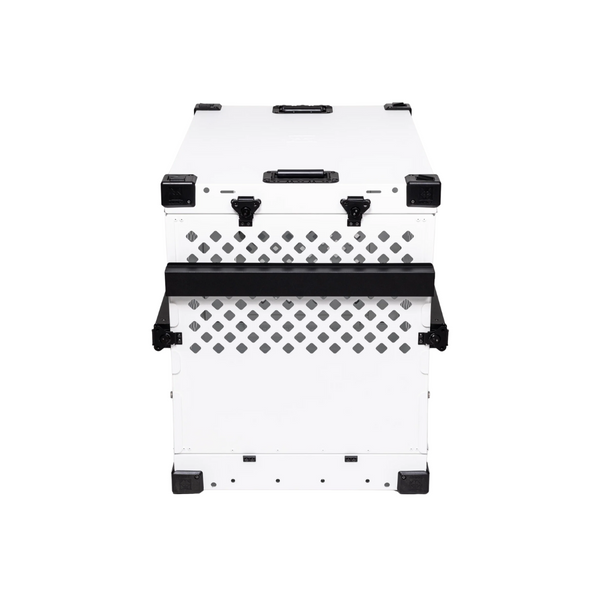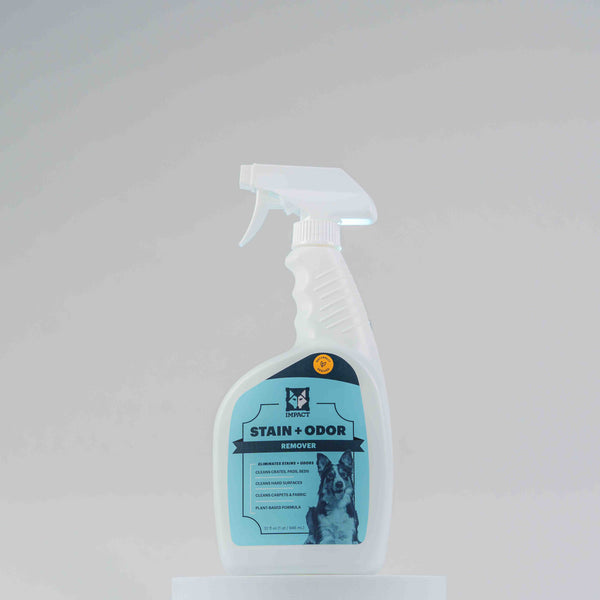Whether you’re new to dog ownership, considering adopting a dog, or have grown up with dogs running around your house; you’ve likely heard of crate training. One of the most common and talked about types of pet training, crate training is the process in which a secure crate is utilized to provide a safe, comfortable, and enclosed environment for dogs.
Why crate train your dog?
Understandably, you may be wondering “well, why should I crate train my dog?”. There are many benefits of crate training your dog. Not only do many dogs enjoy the comfort and relaxation that they find in their crates, but a crate also provides superior protection for your pup- and your home. Furthermore, in times of emergencies, a crate can be utilized to safely transport your canine companion. Let’s take a look at some of the biggest benefits to crate training.
-
It can be a powerful tool for encouraging positive behavior.
-
Crates can aid in potty training.
-
Dog crates protect your pup and your home.
-
During an emergency, a crate will keep your dog safe.
-
Vehicle and airplane travel is safer with dog crates.
-
Crates provide a safe, comforting space for your dog to relax.

Crate Training Checklist
Decided to start your dog’s crate training journey? Here is what you will need:
-
A safe and secure dog crate. Your dog’s crate should be sturdy and constructed from a high-quality, durable material. Try to avoid flimsy wire or plastic dog crates, as they are most likely to be easily damaged or destroyed after only a few uses. It’s important to ensure your dog has the right size crate where they can comfortably stand up, move around, and lay down in.
-
Treats! Have a good supply of your pup’s favorite treats on hand, as this will come in handy during the crate training process.
-
A crate pad or blanket. Especially during the stage of introducing your dog to their crate, it’s a good idea to make the crate a cozy space for them. While some dogs may prefer the cooling sensation of sleeping in their bare crate, it’s advisable to have a crate pad or blanket as an option for your pup. Not only will this make the interior of the crate more comfortable and relaxing for your dog, but for older dogs or dogs with joint pain, an Orthopedic Crate Pad provides the highest level of comfort and support for pups in their crates.
-
An item of your clothing (optional). One of the best tricks for helping your pup accustom to their new hangout spot is to include an item of your clothing. As us dog owners know, our four-legged friends are very loyal and become familiar with our scents. In fact, many dog experts believe that their owner’s scent can be very comforting to dogs, which is where this tip comes in handy. When your dog has a piece of your clothing in their crate with them (or any small item that smells like you), it can help put them more at ease in this new environment.

Before you begin
Like many situations, preparation is key when it comes to crate training. That being said, for all our dog owners out there, there are ways you can help prepare ahead of time to make the crate training process as seamless as possible. It’s a good idea to set your crate up in advance and plan for an at-home assembly (if it's required). Keep in mind that some larger crates may need two people to carry or set it up. Next up, choose a location within your home for the dog crate. It’s recommended that your dog crate be kept in a secluded area away from lots of foot traffic or loud noises. Why is that? The answer is simple; many dogs (especially those who suffer from anxiety) can become easily overwhelmed by loud environments. A dog crate provides a safe and comfortable environment away from distractions and noise. However, if your dog’s crate is in a busier part of the house, your pup is more likely to feel left out. After all, wouldn’t you be bummed if you could see your best friends hanging out but couldn’t join them? Hence why the best place for your dog’s crate is in a quiet, isolated area.
Our Crate Training Guide
Step 1: Introducing your dog to their crate
Let’s talk about the first step to crate training: the introduction phase. We get it; this step of the crate training may sound pretty self explanatory. Nonetheless, this step is very important to ensure crate training your dog is a success. Step 1 of crate training should be slowly- and consistently- introducing your dog to their crate. So what does this look like? After you have your pup’s crate set up in your desired location, allow your dog to explore and investigate the new foreign object in their home. Remember, a dog crate might appear quite scary at first to your canine, especially if they have never seen one before. This is why it is crucial to gradually introduce your dog to this new environment. Leave the door of the crate open and encourage your dog to take a look around. Important: at this stage in the crate training process, it is not advised to shut your dog inside of their crate.
Placing a few of your dog’s favorite toys, treats, or even some of your clothing (refer to our crate training checklist for what we are talking about) is a great strategy for encouraging your dog to enter the crate. Another expert tip is to feed your dog a meal in the crate. After all, many dogs are food-motivated, so feeding them in their crate is more likely to help your pup associate feelings of happiness with their new safe space.
We know that every dog is different and has their own unique needs, which is why there should never be a “one size fits all” approach to crate training. Every dog will move at their own pace, and it's important to allow them to do so. In other words, the introduction of your dog to their new crate should never be rushed. Whether there’s an instantaneous acceptance or it takes a few days or weeks, remember to be patient. Doing so will ensure the most successful outcome and allow you and your beloved canine companion to embrace the many benefits of crate training.
The introduction phase of crate training is all about encouraging your dog to become familiar and comfortable with this new environment, and the next crate training steps will allow for your pup to begin enjoying the benefits of their crate.

Step 2: Giving your dog some alone time
Once the introduction step of the crate training process is complete and your dog has become more comfortable with their crate, you can move onto step two. After your dog has spent some time investigating their new crate, it’s time to practice giving them some relaxation time in their safe space. At this point, your dog should be okay with going in and out of the crate, as the next step is to allow your dog some alone time inside of their crate.
Utilizing some of our tips mentioned above (feeding inside of the crate, leaving toys, etc), slowly usher your dog into the crate. Once they are calm and at ease inside of the crate, gently shut the door and leave the room. It is totally normal for many pups to panic at first about being in a crate- especially when they see their owner leave them. However, by the end of the crate training process, many pups begin to love and enjoy being in a safe and secure environment just for them. That being said, don’t be alarmed if your dog seems scared of the crate at first. The best way to show your pup that this new environment is not so scary is to give them lots of time to become used to it- so they can see for themselves the comfort and security it provides them.
During this step of the crate training process, it's advised to start short. Leave your pup alone in their crate for short periods of time, before gradually building it up to where your dog can comfortably spend longer periods of time inside of their crate. Next time you run out to get coffee or make a brief grocery store trip, secure your dog in their crate. We recommend that at first you try crating your pup a few times a week for short periods of time. Since every dog is different, you’ll be the best judge of when your pup will begin enjoying being inside of their crate for longer periods of time. As they become more comfortable with being in their crate, you’ll find that it will become much easier to gradually leave them in their crates for longer periods of time, ensuring they have plenty of time to de-stress and relax in a safe environment.

Step 3: Practice!
As us humans know, whenever we take up a new hobby or learn a new skill, practice is the key to being successful. When crate training your dog, practice is one of the most important elements. Repetitive practice is one of the best ways to ensure that crate training your dog is a success, and in doing so, this allows your dog to enjoy all the many benefits that a safe and secure dog crate can provide.
Once your dog has become accustomed to being alone inside of their crate, it’s important to be consistent with practicing leaving them alone for longer periods of time. If your dog prefers having a routine, such as being fed in their crate, make sure that you continue to practice that routine. It’s a good idea to continue utilizing some of the best tips for crate training your dog (see above), to ensure that your dog always has a pleasant and positive experience inside of their crate. When successful, crate training your dog makes sure they always have a safe environment to bring them comfort and security. Continuing to practice crate training is one of the best ways to make certain that your dog can continue to enjoy the many benefits that their crate provides.
We hope these crate training tips help you as you begin your crate training journey with your pup! For more helpful crate training content, be sure to check out our other helpful dog training articles.














